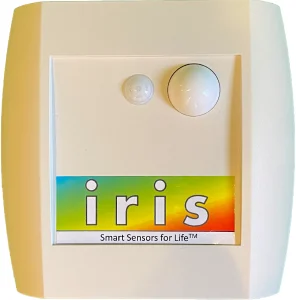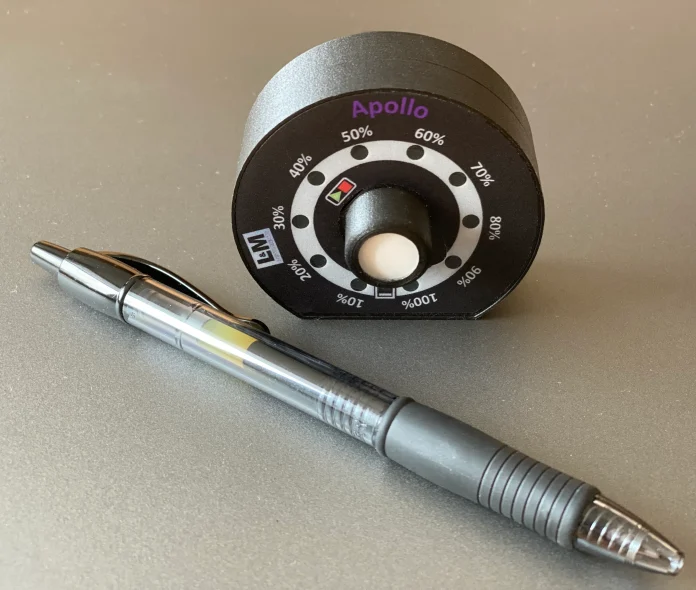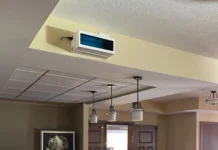Liz Stevens, writer, UV Solutions
L and M Instruments, LLC (L and M), Boston, Massachusetts, designs and manufactures cloud-connected, highly integrated, multi-sensor Internet-of-Things (IoT) environmental and power monitors. The company also licenses sensing technology used by over 100 organizations worldwide. L and M’s sensing capabilities include UV-C, temperature, relative humidity, spectral power distribution, color temperature, illuminance, flicker, voltage, current and power.
L and M founders John Waszak and Steve Waszak began developing precision light measurement technology for the thin-films industry in the late 1980s. This technology became the basis for L and M Instruments, LLC, in 2012, when advances in mixed-signal semiconductors enabled its first highly integrated light-sensing products incorporating optical components – photodiode sensor, analog/digital including automatic gain control and communication components – in one compact system. “In 2013,” said John Waszak, “a major OEM began licensing the technology, and embedded it into their own light measurement equipment, including UV-C meters.”
Early on in L and M’s tenure, said Waszak, “curing was the bigger market for our technology, as it relates to UV sensing.” The company’s precision sensing hardware and software were incorporated in radiometers “to ensure that the UV lamp (low-pressure mercury, excimer or LED) was operating within the correct irradiance range and applying enough dose to dry a variety of inks, glues and top-coatings used in applications such as magazine print, dashboard component labeling and hardwood flooring.”
The COVID-19 pandemic has illustrated what many in the UVGI community already knew: UV-C is highly effective for inactivating dangerous pathogens. The market and the demand for UV-C sensing technology continue to expand, creating opportunities for L and M and for Apollo, the company’s novel UV-C-dedicated sensor technology. The Apollo product line features ultra-low power compute, precision light sensing and flexible interfacing, and is applicable for disinfection system providers and end-users.
Beginning at the early stages of the COVID-19 pandemic, the Apollo sensing technology became part of surgical mask disinfection systems used in hospitals. “Our technology, through an OEM, experienced extremely high demand early in the pandemic when PPE such as surgical masks was in short supply,” Waszak explained. “Hospitals began disinfecting masks so that they could be reused, using disinfection systems that incorporated our technology to validate the amount of UV-C light reaching the masks.” The early UV-C disinfection methods often used free-standing lamps that shone UV-C light onto surrounding items like surgical masks. “Now,” said Waszak, “there are disinfection units that look like microwave ovens. These use a grid of radiometers, including L and M’s technology, to periodically validate the UV-C energy throughout the interior of the unit.”
Apollo UV sensing technology includes dose indicators at 220 nm, 254 nm and 275 nm, deployed inside UV metering devices for both curing and disinfection operations. “We cover the most common UV-C disinfection applications and light source technology,” Waszak said. “220 nm is used for far-UVC applications, typically monitoring excimer light sources. This technology can be used in occupied room disinfection.” He explained that 254 nm is the dominant line in common low pressure mercury lamps that are used for higher-power object and empty room disinfection, and he added that “some customers also are looking at using 254 nm below the ‘hazard level’ for occupied room disinfection.” 275 nm is in the wavelength neighborhood for emerging UV-C LED technology. L and M also has broad-spectrum UV-C sensors that capture all the energy across the UV-C spectrum for broad band sources such as pulsed Xenon.
The technology has been licensed and used by corporations including General Electric, Apple, Walt Disney, UL, United, Tyco, Sony, Honeywell, J&J, Philips, Merck and Kidde. L and M’s technology enables NIST-traceable UV measurement and monitoring with precision measurement technology, software and APIs to facilitate the NIST standard’s qualification steps. Apollo technology can be used as a stand-alone UV-C dose indicator or dosimeter, or integrated with host computers, microcontroller circuits or PLCs via several connectivity options including USB, TTL-level UART, RS232 or wireless communications.
 L and M’s technology also has been used in the disinfection of food packaging. “Before food, such as a cup of yogurt or packaged lettuce, is placed in a package and vacuum sealed for delivery to a supermarket shelf, the container is disinfected, oftentimes with UV-C light,” Waszak explained. “Because the UV-C light source will degrade over time, it is important to validate the intensity and energy applied during the process. Our technology is used in meters that validate those parameters.”
L and M’s technology also has been used in the disinfection of food packaging. “Before food, such as a cup of yogurt or packaged lettuce, is placed in a package and vacuum sealed for delivery to a supermarket shelf, the container is disinfected, oftentimes with UV-C light,” Waszak explained. “Because the UV-C light source will degrade over time, it is important to validate the intensity and energy applied during the process. Our technology is used in meters that validate those parameters.”
Waszak added that newer Apollo units are currently under testing in a variety of applications including large hospital item disinfection (wheelchairs, for example), hospital surgical room disinfection and office building occupied room disinfection.
The future looks bright for L and M. “We are focused, at the moment, on working with our OEMs and partners to support and evolve all of our technologies,” said Waszak. “We also are in the concept phase of incremental and platform developments that will make UV-C monitoring more ubiquitous.”
L and M Instruments, LLC, earned a 2021 RadLaunch Award. For more information, visit www.landminstruments.com.






